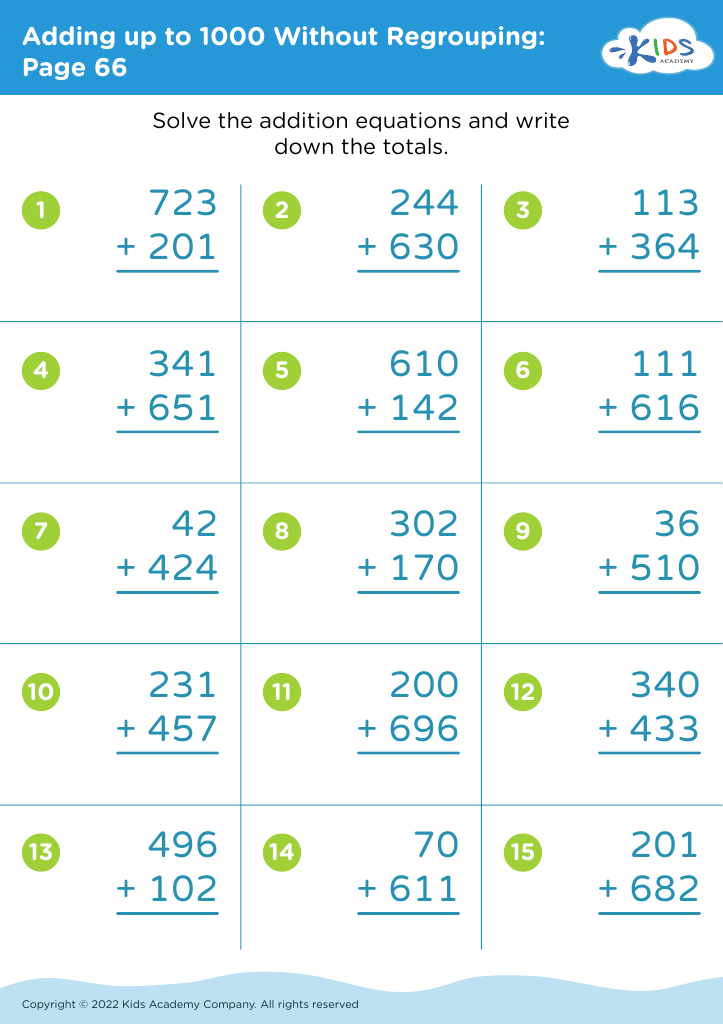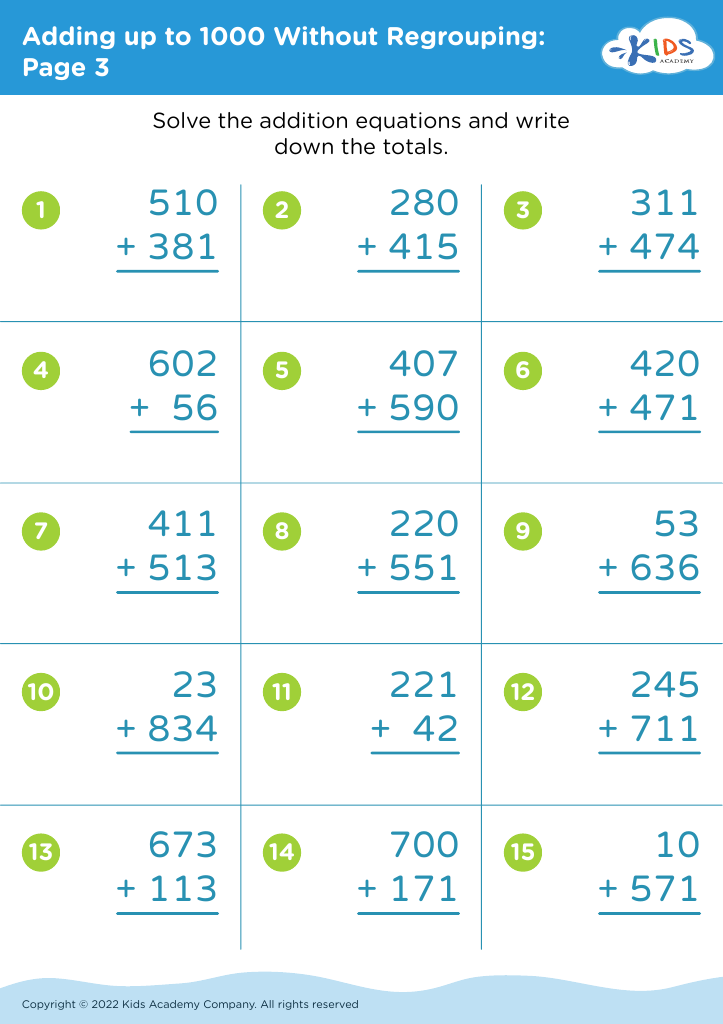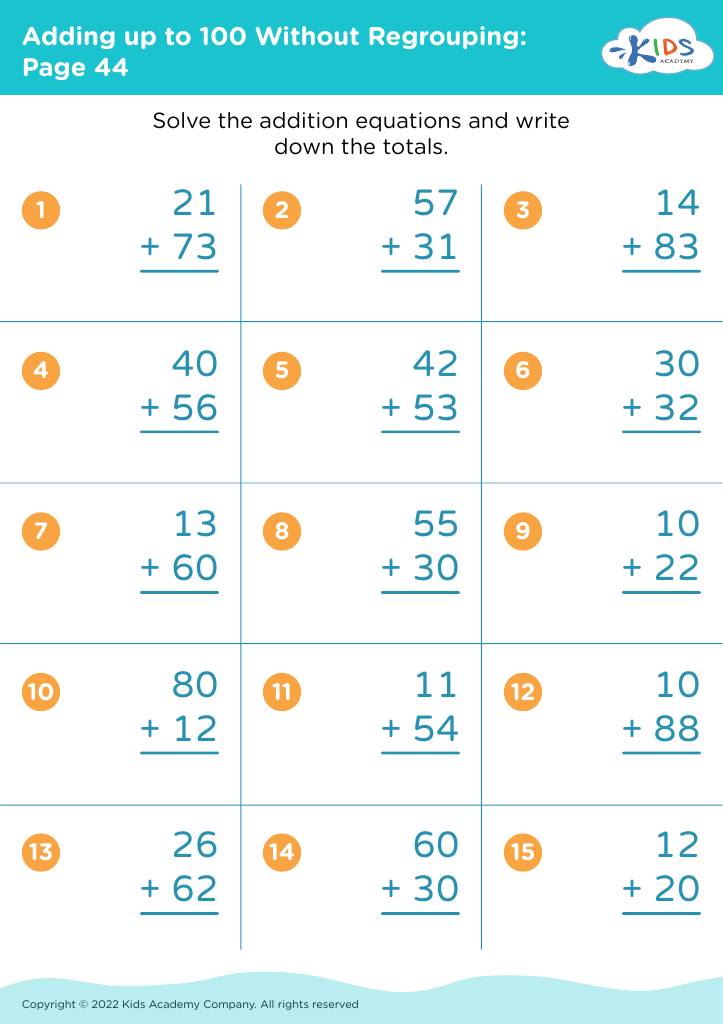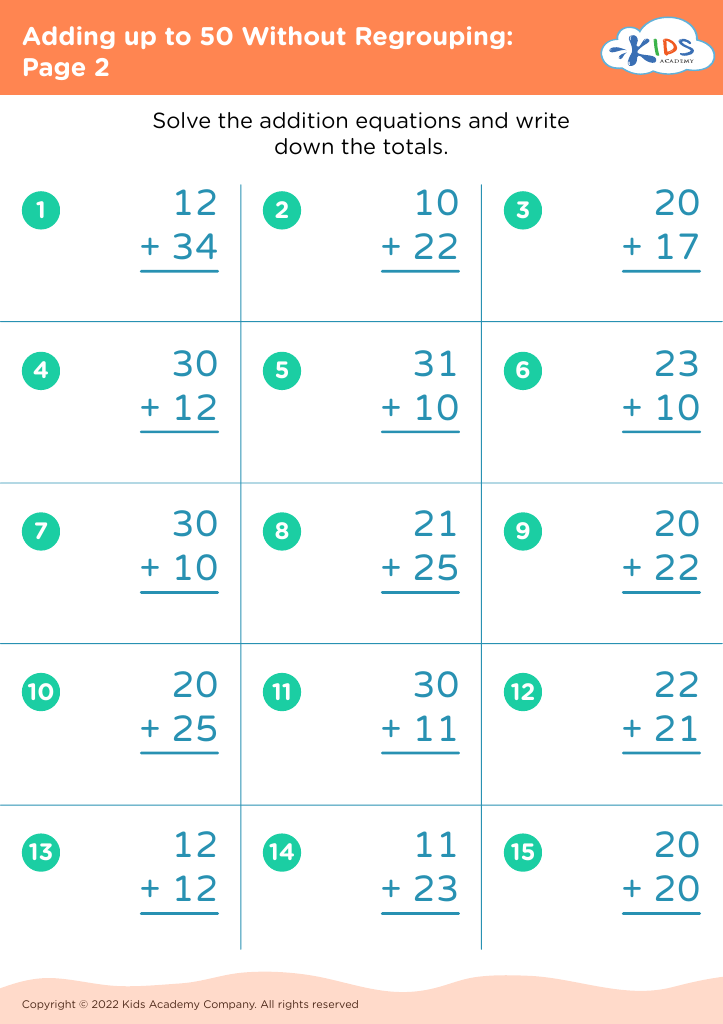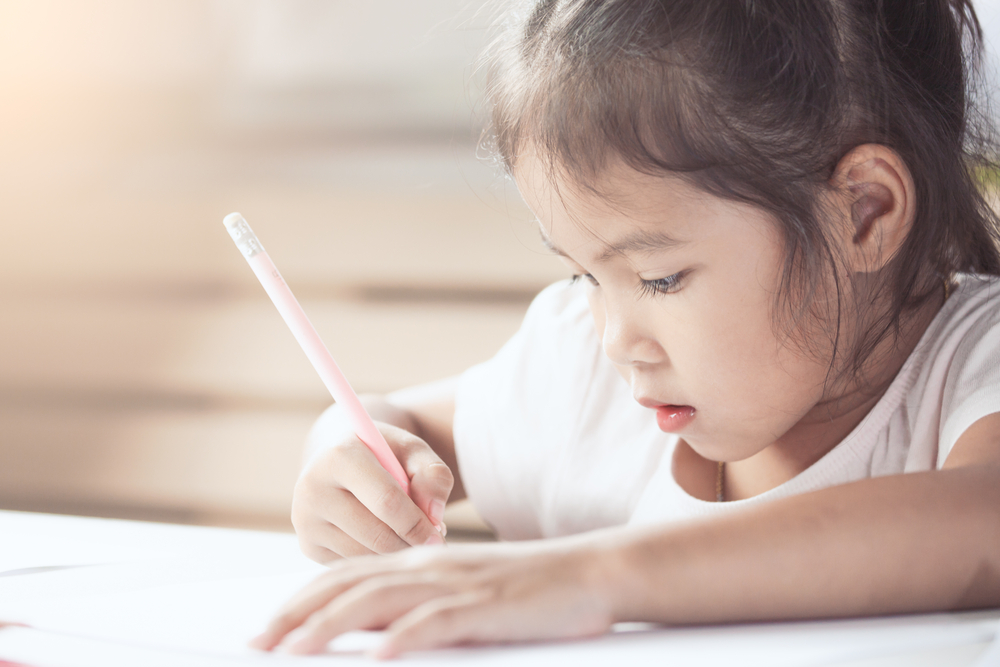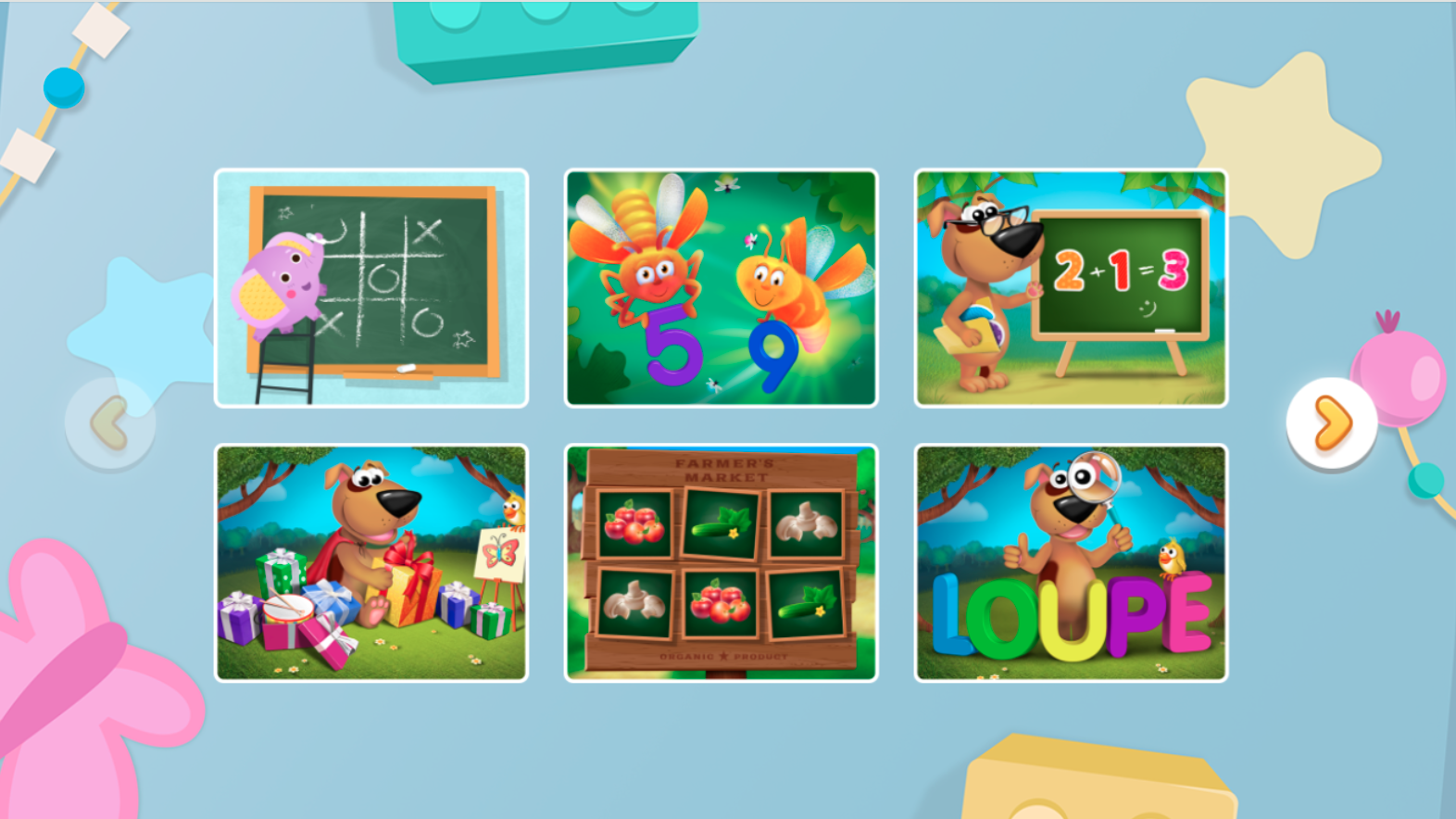Understand patterns Addition & Subtraction Worksheets for Ages 6-8
6 filtered results
-
From - To
Unlock the world of math for your 6-8 year-olds with our Understand Patterns Addition & Subtraction Worksheets. Designed to strengthen foundational math skills, these worksheets help children recognize and master numerical patterns through engaging activities. By focusing on patterns, young learners develop critical problem-solving abilities, making addition and subtraction intuitive and fun. Each worksheet is carefully crafted to promote logical thinking and enhance mathematical reasoning, ensuring that kids not only learn but also enjoy the process. Perfect for home practice or classroom use, these resources foster confidence in young mathematicians. Explore our collection today and watch your child's skills blossom!
Understanding patterns in addition and subtraction is crucial for children aged 6-8 as it lays a strong foundation for their mathematical development. This stage marks the transition from simple arithmetic to more complex problem-solving skills, making it essential for both parents and teachers to engage with these concepts.
Recognizing patterns helps children make sense of numbers and see relationships between them, which fosters number fluency. For instance, identifying patterns in addition (like how adding zero keeps a number the same) can accelerate their ability to compute and understand the concept of equivalences. Similarly, observing patterns in subtraction reinforces the idea of number ‘bonds’ or complements, enhancing their capability to tackle more substantial arithmetic problems.
Moreover, proficiency in recognizing patterns sharpens critical thinking skills, encouraging children to predict outcomes and draw conclusions from numerical operations. This skill also plays a vital role in developing higher-level math concepts encountered later, such as multiplication, division, and algebra.
By prioritizing pattern recognition in addition and subtraction, parents and teachers not only support mathematical mastery but also promote a lifelong love for numbers and problem-solving, preparing children for academic success ahead. Encouraging engagement in pattern activities can make learning more interactive and enjoyable.
